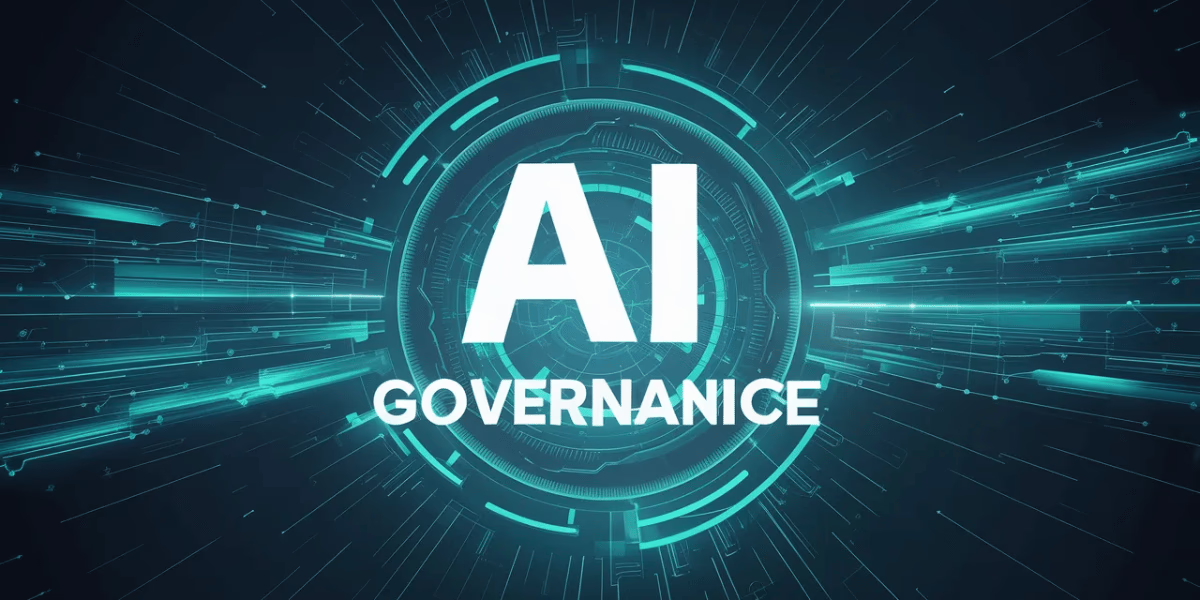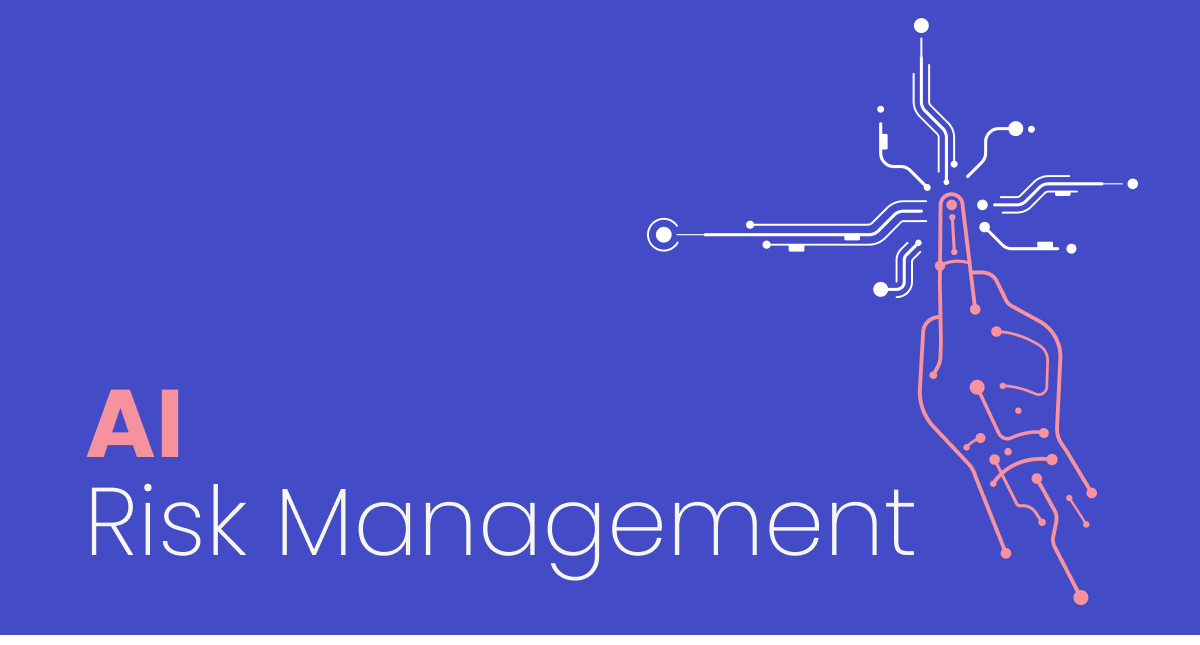
AI Governance and Security Risks.
AI Governance & Security: Risk Management for Artificial Intelligence
In the ever-evolving landscape of artificial intelligence, ensuring the security and governance of AI systems is paramount. As organizations increasingly rely on AI technologies, understanding the framework of responsible AI governance becomes crucial. This article delves into the intricacies of AI governance and security, highlighting the importance of risk management in safeguarding AI deployments and mitigating potential threats through explainable AI.
Understanding AI Governance
Definition and Importance of AI Governance
AI governance refers to the structured approach of overseeing the development and deployment of AI systems to ensure they operate ethically, securely, and in compliance with NIST AI RMF. It is essential to establish a robust governance structure that aligns with ethical AI practices and adheres to regulatory frameworks such as the EU AI Act. By implementing effective AI governance, organizations can ensure that AI models are trustworthy and align with societal values, especially in the use of AI.
Components of an Effective AI Governance Framework
An effective AI governance framework comprises several components, including data governance, risk assessment, and security measures that enhance cloud security. The framework focuses on establishing governance policies that guide AI development, deployment, and monitoring to manage AI risks effectively. It ensures compliance with AI regulations, fostering a secure AI environment where potential risks are anticipated and mitigated through vigilant oversight.
| Component | Purpose |
|---|---|
| Data Governance | Establish policies for AI development and deployment |
| Risk Assessment in the context of AI governance is essential for identifying vulnerabilities and ensuring data security. | Manage AI risks and ensure compliance with regulations |
AI Governance in the Context of Security Risks
AI governance plays a critical role in addressing security risks associated with AI technologies. By integrating AI security measures into the governance framework, organizations can fortify their security posture against vulnerabilities in the use of AI. This involves deploying secure AI practices, adhering to security standards, and empowering security teams to proactively manage and respond to security threats, ensuring that AI systems remain resilient and protected.
Identifying AI Risks
Types of AI Security Risks
AI security risks can manifest in various forms, including unauthorized access, data breaches, and model manipulation. Identifying these risks is crucial for developing a comprehensive AI risk management framework.
| AI Security Risks | Importance |
|---|---|
| Unauthorized Access | Implement targeted security strategies |
| Data Breaches can significantly impact the integrity of AI systems, making data security a critical focus in AI governance. | Protect against threats |
| Model Manipulation | Ensure secure AI infrastructure |
By understanding the nature of AI security risks, organizations can ensure a secure and reliable AI infrastructure that prioritizes the integrity of AI tools and systems.
Risks Associated with AI Applications
AI applications pose unique risks, particularly when they involve sensitive data and decision-making processes. Potential risks include biased AI models, lack of explainability, and ethical concerns. Addressing these issues requires a responsible AI governance framework that emphasizes ethical AI practices and robust risk management frameworks. Organizations must proactively address these risks to maintain trust in AI applications and safeguard their reputation.
Model Risk in AI Systems
Model risk in AI systems arises from inaccuracies or flaws within AI models that can lead to incorrect predictions or decisions. Managing model risk involves continuous monitoring and validation of AI models to ensure their accuracy and reliability.
| Aspect | Action |
|---|---|
| Governance Structure | Prioritizes model risk assessment to ensure that AI tools are developed and deployed in accordance with responsible AI practices. |
| Objective | Ensure AI systems perform optimally and responsibly through the implementation of responsible AI practices. |
By implementing a governance structure that prioritizes model risk assessment, organizations can ensure that AI systems perform optimally and responsibly, minimizing the impact of potential errors on business operations.
Risk Management Approaches for AI
Frameworks for AI Risk Management
At Teamwin Global Technologica, we recognize the paramount importance of implementing robust frameworks for AI risk management. These frameworks are essential in navigating the complexities of AI systems, facilitating a structured approach to identify and mitigate potential risks. By establishing a comprehensive governance structure, organizations can ensure that AI technologies are deployed responsibly, paving the way for secure and ethical AI development and the responsible use of AI.
NIST AI Risk Management Framework
The NIST AI Risk Management Framework (AI RMF) underscores our commitment to safeguarding your enterprise. This framework provides a robust set of guidelines for AI risk management, addressing both technical and ethical AI concerns, particularly in the use of AI. By adhering to these standards, organizations can fortify their AI systems against vulnerabilities, ensuring trustworthy AI deployment that aligns with both industry best practices and regulatory requirements such as the EU AI Act.
Best Practices in AI Risk Management
Adopting best practices in AI risk management is crucial for maintaining the integrity of AI models and systems. Our professional guidance focuses on proactive risk assessment and the deployment of secure AI measures. By fostering a culture of responsible AI governance, organizations can mitigate risks associated with AI initiatives, thus reinforcing their security posture and ensuring that AI applications operate within ethical and legal boundaries.
Implementing Secure AI
Strategies for Developing Secure AI Systems
Developing secure AI systems requires a strategic approach, emphasizing prevention and protection. Empowering clients through a comprehensive suite of IT security solutions, we ensure that AI systems are developed with a focus on security measures and governance policies. This entails anticipating and mitigating security threats through vigilant monitoring, thus fortifying your business against potential vulnerabilities that could compromise your organization’s integrity.
AI Lifecycle Considerations for Security
Security considerations throughout the AI lifecycle are crucial for achieving a resilient AI infrastructure. From AI development to deployment, our strategies ensure that AI systems remain secure and reliable. By integrating security standards into each phase of the AI lifecycle, organizations are equipped to handle security risks effectively, safeguarding critical data and maintaining trust in AI technologies, while ensuring that every interaction leaves you feeling valued and inspired.
Responsible AI Governance for Security
Responsible AI governance is the cornerstone of a secure AI environment, facilitating the use of AI in a manner that upholds data security. By implementing governance structures that prioritize security and ethical AI practices, organizations can manage AI risks comprehensively. This approach not only enhances the trustworthiness of AI systems but also assures that your infrastructure is secure and safe. Our dedication to responsible AI governance fosters peace of mind, enabling you to seize opportunities with confidence and assurance.
Regulatory Landscape and Compliance
Overview of the EU AI Act
The EU AI Act represents a pivotal step in the regulation of artificial intelligence, setting stringent guidelines to ensure the ethical and secure deployment of AI systems, particularly in the context of generative AI. This legislative framework mandates organizations to adhere to robust AI governance structures, emphasizing the importance of transparency and accountability in AI development. By complying with the EU AI Act, businesses can mitigate potential legal risks and foster trustworthy AI practices.
NIST Guidelines and Compliance for AI Security
The NIST guidelines provide a comprehensive framework for AI risk management, crucial for safeguarding AI technologies. These guidelines emphasize the integration of AI security measures throughout the AI lifecycle, ensuring that AI systems remain resilient against security threats. Compliance with NIST standards bolsters an organization’s security posture, empowering security teams to proactively manage risks and ensure that AI applications align with ethical and regulatory requirements.
Impact of Regulations on AI Risk Management
Regulations such as the EU AI Act and NIST guidelines significantly influence AI risk management frameworks by setting clear standards for AI development and deployment. These regulatory measures require organizations to implement effective AI governance frameworks that address potential risks associated with AI applications. By adhering to these regulations, companies can enhance their security measures, ensuring robust AI systems that build trust with stakeholders and users alike.
Future Directions in AI Governance and Security
Emerging Trends in AI Governance
The landscape of AI governance is rapidly evolving, with emerging trends highlighting the need for adaptive frameworks that address new AI security risks. Innovations in AI ethics and data governance are becoming critical components of effective AI governance frameworks. Organizations must stay abreast of these trends to ensure responsible AI governance, fostering a secure environment that supports sustainable AI adoption and development.
Innovations in AI Risk Management Frameworks
Innovations in AI risk management frameworks are crucial for addressing the complexities of modern AI systems and their associated risks. These frameworks prioritize proactive risk assessment and the integration of advanced security measures. By adopting cutting-edge technologies and methodologies, organizations can fortify their defenses against AI security threats, ensuring that AI deployments are both secure and aligned with ethical AI principles.
Preparing for the Future of AI Security
To prepare for the future of AI security, organizations must implement robust governance structures that anticipate and respond to evolving security threats, particularly in cloud security. This involves deploying AI systems with a focus on security, risk management, and compliance with regulatory standards. By fostering a culture of responsible AI governance, companies can safeguard their infrastructure, ensuring that AI initiatives remain secure, reliable, and ethically grounded in the face of emerging challenges.
5 Surprising Facts About AI Governance and Security Risks
- AI systems can inadvertently perpetuate bias, leading to discriminatory outcomes if not properly governed.
- Approximately 60% of organizations lack a formal AI governance framework, increasing their exposure to security risks.
- AI-related security incidents have increased by over 300% in the past few years, highlighting the urgent need for robust governance.
- Data privacy regulations, such as GDPR, are not always aligned with AI development, creating governance challenges.
- AI can be used to enhance security measures, but it also poses risks of being weaponized for cyber attacks.
What is AI Governance and Why is it Important?
AI governance refers to the framework and practices that ensure responsible AI development and use. It is crucial for managing risks associated with AI technologies, ensuring ethical use, and aligning AI systems with organizational values and compliance requirements. Effective governance helps in overseeing AI initiatives and mitigating potential security risks.
How Can Organizations Implement Responsible AI Governance?
Organizations can implement responsible AI governance by establishing a robust AI governance framework that includes security controls, compliance with legal standards, and ethical guidelines. This involves creating policies that guide the development, deployment, and oversight of AI systems, ensuring that all AI algorithms are aligned with best practices and risk management frameworks.
What Are the Security Risks Associated with AI?
The security risks associated with AI include vulnerabilities in AI models, data privacy issues, and the potential for malicious use of AI technologies. Organizations must be aware of these risks and take proactive measures to implement security controls and risk management strategies to protect their AI systems and data.
What Are Best Practices for Managing AI Security Risks?
Best practices for managing AI security risks involve conducting regular risk assessments, implementing robust security measures, and adhering to AI compliance standards. Organizations should develop an AI risk management framework that includes continuous monitoring and evaluation of AI applications to identify and mitigate potential threats.
How Does the EU AI Act Influence AI Governance?
The EU AI Act sets forth regulations that guide the ethical use of AI and establish compliance requirements for AI systems. Organizations operating in or with the EU must ensure their AI governance practices align with the provisions of the Act, focusing on transparency, accountability, and risk management to avoid legal risks associated with non-compliance.
What Role Does Model Risk Management Play in AI Development?
Model risk management is a critical component of AI governance that focuses on identifying, assessing, and mitigating risks associated with AI models. By implementing model risk management practices, organizations can ensure that their AI systems are reliable, effective, and aligned with governance best practices, thereby reducing the likelihood of adverse outcomes.
How Can Organizations Align AI Initiatives with Effective Governance?
Organizations can align AI initiatives with effective governance by establishing clear objectives that reflect their values and compliance requirements. This involves integrating AI governance practices into the AI lifecycle, ensuring that all stages of AI development and deployment are governed by established standards and security measures.
What Are the Key Components of a Robust AI Governance Framework?
A robust AI governance framework includes several key components: clear policies for responsible AI development, security controls to protect data and systems, compliance measures to adhere to legal standards, and ongoing oversight of AI initiatives. By incorporating these elements, organizations can effectively manage risks associated with AI while promoting ethical use and innovation.
What Ethical Considerations Should Be Taken into Account in AI Governance?
Ethical considerations in AI governance involve ensuring fairness, transparency, and accountability in AI systems. Organizations should adopt practices that prevent bias in AI algorithms, protect user privacy, and promote the responsible use of AI technologies. By addressing these ethical issues, organizations can build trust with stakeholders and mitigate the risks related to AI.








